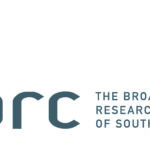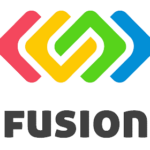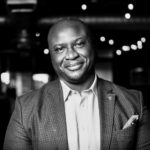The recent Pan African Media Research Organisation (PAMRO) Research virtual conference expunged all doubt that what every country needs, is an organisation to track audience measurement. Equally as important are the industry bodies that govern them.

The conference presenters were from London-based agency, pure X media, a strategic consultancy that specialises in media measurement systems, and media analysis, insights, and interpretation. Spanning decades of experience, both Pushkar Kulkarni and Renata Uhlarikova gave a convincing presentation to PARMO members and non-members about the most common structures of an efficient and effective industry body.
Sifiso Falala, PAMRO Chairperson said, “The topic of audience measurement systems and a deep dive into various structural forms of industry bodies is an important topic for Africans. It was great to start the year off by learning from experts who have worked with leading organisations around the world. While all African countries need one, the selection of precisely the right organisational structure is key. It is not a one-size-fits-all approach.”
The ‘Own Service’ structure
The Own Service structure is generally set up on an entrepreneurial basis and wholly owned and managed by a research supplier. Benefits of this kind of structure include the lack of long-term cost commitments by users, and the speed in which it operates. Shortcomings of an own service is the question around quality – as it depends on the supplier’s initiatives. This means quality can be variable. It also means there is no direct control by users.
The Joint Industry Committee (JIC)
Another structural option is a Joint Industry Committee (JIC). Good value for money by members is one benefits of a JIC. Another is that it is likely to offer the most reliable form of research due to total industry involvement. It is also a transparent approach which is a plus. The shortcomings, however, are that a JIC tends to be the slowest method of an organisation, and it takes a lot longer to set-up than other organisational structures.
Media Owners Committee (MOC)Another option is the Media Owners Committee (MOC), benefits include service costs that are guaranteed and usually shared; the contract is open to competition; and the results are acceptable to all subscribers. The shortcomings of a MOC is that it’s slower to set up and make changes. The organisation may discriminate against non-participating media owners and media agencies sometimes have little influence.
Falala says, “Having learned all this information – some of us for the first time – the question on our members lips, is how exactly to bring this to Africa. There must be a willingness to work together as a start. Then a selection of industry representatives should be agreed upon. The matter of funding is key, and it should be tabled as a formal agreement. Lastly selecting and creating an organisational structure and choosing a supplier will set you on the road to success.”
The PAMRO conference concluded with a superb question from the audience: “What is a trading currency, and why is it important?” The trading currency drives the industry. It is best described as the revenue and expenditure that is directly related to audience ratings.
Falala explains, “This is where organisation bodies come in. The benefits of governing bodies are that they establish a trading currency. They ensures the trading currency is always up to date, and that the results are acceptable to all subscribers. Organisational bodies also strive to offer the most reliable form of research. They ensure total industry involvement by guaranteeing measurement systems are set as per industry requirements. Like PAMRO, they should be an industry body, by the industry, and for the industry”.
- MRF Unveils Latest MAPS® Data - 20th February 2025
- The BRC announces changes to the board and updates for 2025 - 17th December 2024
- Top 50 DSTV TV programmes – October 2024 - 12th November 2024




